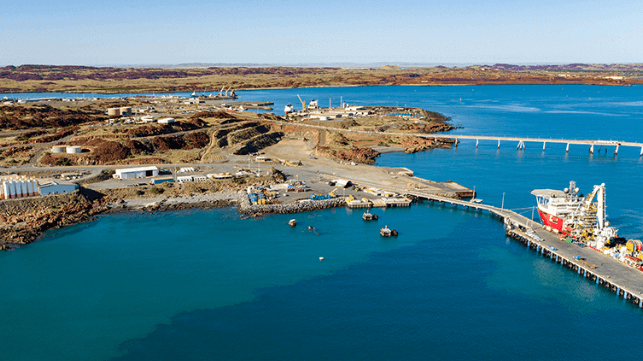Pilbara Ports Expands Facilities at Port of Dampier

The Western Australia government is set to invest $160 million to build a new multi-user wharf and facilities at the port of Dampier in an effort to make the port a hub for urea exports.
Through the Pilbara Ports Authority, the government has issued an expression of interest for the design and construction of the new wharf that is designed to support the proposed $3.1 billion Perdaman Urea Project.
The Perdaman project is expected to convert liquefied natural gas into about two million tonnes of urea per year, targeting domestic and export markets.
“This expression of interest is a fantastic opportunity for businesses to show their interest in working on a transformational project that will ensure the supply of urea domestically and internationally for decades to come,” said Rita Saffioti, Ports Minister.
The new wharf will be constructed south of the existing cargo wharf and includes a new berth pocket and a maneuvering area. It will be equipped with bulk handling facilities for urea, including a storage shed, a conveyor system and a shiploader. The conveyor will transport the urea over the four mile distance from the plant to the port of Dampier. 50 to 100 shiploads are expected annually. The new wharf will also allow for the docking of bulkers, cruise ships and general cargo vessels.
The construction of the new wharf and facilities is being funded by the Northern Australia Infrastructure Facility (NAIF) and a contribution from the Western Australian Government.
Perdaman, a multinational group based in Western Australia, is investing $3.1 billion to develop a plant that will transform natural gas into urea, a widely used form of fertilizer for production. The company has secured natural gas for 20 years from Woodside under a gas supply agreement signed in November 2018.
Perdaman believes that the urea project will generate more than $631 million per year in export earnings for Western Australia. It is also expected to support on average around 2,500 jobs during the three-year construction phase, with another 200 ongoing operational jobs.
The traditional owners of the land have objected to the construction project because they believe it threatens to harm one of the world's largest collections of prehistoric rock art. "[The art] holds stories of connection, of how to work with Mother Earth, how to keep it sustainable, plants, animals, healing, everything that you can imagine that is a part of what we are," Kuruma Marduthunera custodian Josie Alec told ABC. "You wouldn't go and rip up the pyramids and put a urea factory on them."
